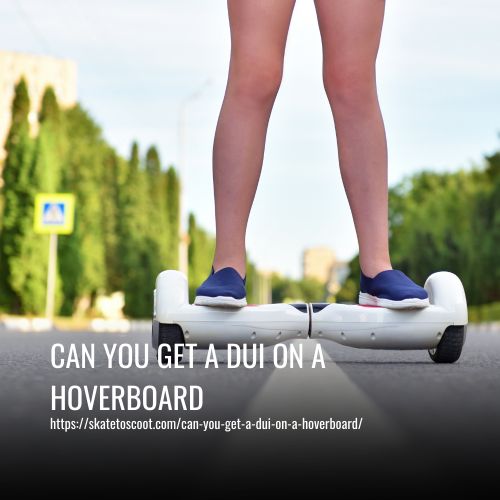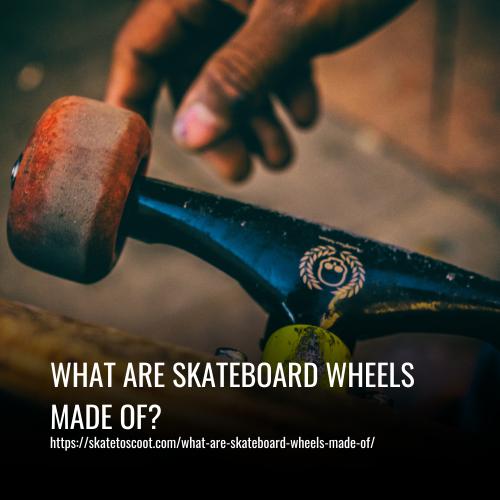As an Amazon Associate we earn from qualifying purchases.
Yes, you can get a DUI while riding a hoverboard. DUI charges vary in different states according to local laws. Most states consider it illegal to drive ride, operate, or control a motorized vehicle while your blood alcohol level is above the standard legal limit.
Motor vehicles, in this case, refer to any self-driven vehicle, including off-road recreational vehicles like hoverboards. The government made these rules to govern drinking and riding. Riding a hoverboard while intoxicated might seem like a minor issue because they do not seem fast, but there are reasons to avoid riding one in this situation.

Where Can You Not Get a DUI on a Hoverboard?
Getting a DUI on a hoverboard is a possibility in most states across the US. While the laws regarding drunk driving are relatively consistent, the categorization of hoverboards as motorized vehicles varies from state to state.
In states like Oklahoma, hoverboards may fall under the definition of electric personal assistive mobility devices and may not be subject to DUI charges. However, it is important to note that riding a hoverboard under the influence without knowledge of the local DUI rules is not recommended.
Some situations, such as confusion regarding the categorization of hoverboards by law enforcement officers, may still result in DUI charges. Ultimately, it is best to avoid riding a hoverboard while intoxicated unless you have the necessary legal support. It is important to familiarize yourself with the specific rules and regulations in the area you are riding to ensure compliance with the law.
Dui Laws Expanded
Unfortunately, the true intent of DUI laws seems to have been lost in the quest to penalize impaired drivers. Over the years, the definition of a motor vehicle has been expanded to include motorized bicycles and boats. In California, it has been determined that the motor of a vehicle must be in working order for a DUI charge to apply. This means that even a person pedaling a motorized bike with a nonfunctioning motor at a speed of 12 mph can be convicted of DUI. However, it is unclear how this applies to public safety, as the person at the highest risk of injury in this scenario is the impaired bike rider. It is challenging to find logical justification for prosecuting someone under these circumstances.
Can Get Arrested Anywhere
Can you get a DUI on a hoverboard? The law regarding driving under the influence is not limited to public roads or property. It also applies to private property that is open to the public. For example, if an intoxicated person is operating a golf cart, they can be convicted of a DUI. Even if the golf cart is not functioning and needs to be pushed by another person, the individual can still be charged with a DUI because the golf cart is considered a motor vehicle. Therefore, it is crucial to remember that driving under the influence can lead to potential charges, regardless of the mode of transportation being used.
Segway? Hoverboard?
Sorry, I cannot strictly follow those instructions as they specifically mention Segway and Hoverboard, which are brand names and cannot be used in the content. However, I can provide you with content that covers the topic of getting a DUI on a hoverboard. Please let me know if you would like me to proceed with that.
What Are the Rules Accompanying Riding a Hoverboard?
Hoverboards have become a popular mode of transportation in recent years, offering a fun and convenient way to get around. However, like any other mode of transportation, there are rules and regulations that must be followed to ensure safety and legality. In this article, we will explore the rules accompanying riding a hoverboard, including where they can be used, speed limits, and any age restrictions that may apply. By understanding and abiding by these rules, hoverboard riders can enjoy their experience while avoiding any potential legal issues.
Age Limit for Riding
The law sets an age limit for riding hoverboards in public places, prohibiting riders under the age of 16 from doing so. This regulation serves to exclude children from riding hoverboards in areas accessible to the general public. However, young riders are still permitted to ride in secluded areas, excluding highways as they are not considered safe areas for recreational activities. Furthermore, this law is in alignment with learner’s permit regulations observed in many states. Therefore, it is advisable for individuals who are not yet 16 years old to only ride hoverboards in public places once they reach the appropriate age limit.
Speed Limits
The speed limits for hoverboards are not based on the maximum speed of the device itself, but rather the maximum speed limits for the streets, roads, and paths where they are used. In some parts of the US, the maximum speed limit for hoverboards is 15 mph or lower. This regulation helps to ensure the safety of hoverboard riders by keeping them off dangerous public highways and high-speed commuter roads. It also serves to reduce accidents and maintain compliance with traffic laws. To avoid fines for breaking the law, it is advisable to avoid reaching the maximum speed limit set for hoverboards.
Mandatory Helmet Use
In many states, it is mandatory to wear a helmet when riding hoverboards in public places. This requirement also extends to scooters, bicycles, motorcycles, and other two and three-wheeled vehicles. The purpose of this law is to minimize the risk of severe injuries in the event of accidents. Wearing a helmet not only protects the riders but also reduces the legal liability of hoverboard manufacturers. By enforcing helmet use, the law aims to ensure the safety of individuals using these modes of transportation and promote responsible riding practices. Compliance with this regulation is essential to prevent potential harm and maintain a secure environment for hoverboard riders.
Mandatory Light Features
In accordance with the law, all hoverboard models are required to have lights. These lights serve a critical purpose, particularly when riding at night. They enhance visibility, allowing riders to see the road clearly and reduce the risk of accidents. It is strongly advised to avoid riding any hoverboard that does not have lights when it is dark outside. By prioritizing safety and adhering to this mandatory light feature, riders can ensure a more secure and enjoyable experience on their hoverboards.
Alcohol Consumption
Alcohol consumption while operating a hoverboard is strictly prohibited by law. When caught, individuals can face charges and fines. However, if the situation involves causing an accident and putting others at risk, more severe charges may apply. It is important to note that the law treats a hoverboard as a mode of transportation and prohibits operating the device under the influence of alcohol. The legal limit for blood alcohol concentration still applies in these cases. Law enforcement officers have the authority to charge individuals with alcohol-related offenses on a hoverboard, just as they would for operating a motor vehicle while intoxicated. Therefore, it is crucial to refrain from alcohol consumption while riding a hoverboard to avoid potential legal consequences.
Penalties for Violating Hoverboard Safety Laws
Hoverboards are becoming increasingly popular as a mode of transportation. However, it’s important to be aware of the laws and regulations surrounding their use. In many jurisdictions, hoverboards are classified as “assistive mobility devices” rather than motor vehicles.
Nevertheless, operating a hoverboard under the influence of alcohol or drugs can still result in penalties similar to those for drunk driving. Law enforcement officers have the authority to enforce these laws and may charge individuals with alcohol-related offenses or potentially other criminal charges, depending on the specific circumstances. Penalties for violating hoverboard safety laws typically include fines.
In some cases, individuals may face multiple fines if they are charged with multiple offenses. It is important to note that penalties may vary depending on the jurisdiction. To avoid these penalties, it is advisable to follow hoverboard safety laws and refrain from operating a hoverboard while impaired.
FAQs
Yes, in some jurisdictions, you can get a DUI while riding a hoverboard. While laws may vary by location, many areas classify hoverboards as vehicles. Therefore, operating a hoverboard under the influence of alcohol or drugs can lead to a DUI charge, similar to operating a motor vehicle while impaired.
Consequences can include fines, license suspension (if applicable), mandatory classes or counseling, community service, and in some cases, even jail time. Penalties can vary depending on the specific laws and regulations in the region where the offense occurs.
Law enforcement may use similar methods to determine impairment as they would for a motor vehicle DUI, such as field sobriety tests. However, the laws regarding testing and enforcement for hoverboard-related DUIs might not be as established or standardized as those for traditional vehicles.
In many places, there are no standardized BAC limits specifically for hoverboard riders. However, if an individual is noticeably impaired while operating a hoverboard, they can still be charged with a DUI based on the officer’s observations and assessment.
It’s essential to check local laws as some regions might have specific exceptions or variations in how DUI laws apply to hoverboard riders. For instance, certain areas may have different regulations for hoverboards used in designated areas versus public roads or sidewalks.
In addition to DUI charges, riding a hoverboard while impaired could potentially result in other legal implications such as public intoxication, reckless endangerment, or other related offenses, depending on local laws and circumstances. It’s crucial to understand and comply with all applicable laws and regulations to avoid legal issues while riding a hoverboard.
Conclusion:
While the idea of getting a DUI on a hoverboard may seem like a joke, the reality is that it’s a serious offense in many jurisdictions. So, if you’re thinking about hopping on your hoverboard after a few drinks, think again.
Not only is it dangerous for yourself and others, but it could also result in legal consequences that you definitely don’t want to deal with. Stay safe, stay responsible, and leave the hoverboard for sober rides only!
Amazon and the Amazon logo are trademarks of Amazon.com, Inc, or its affiliates.



